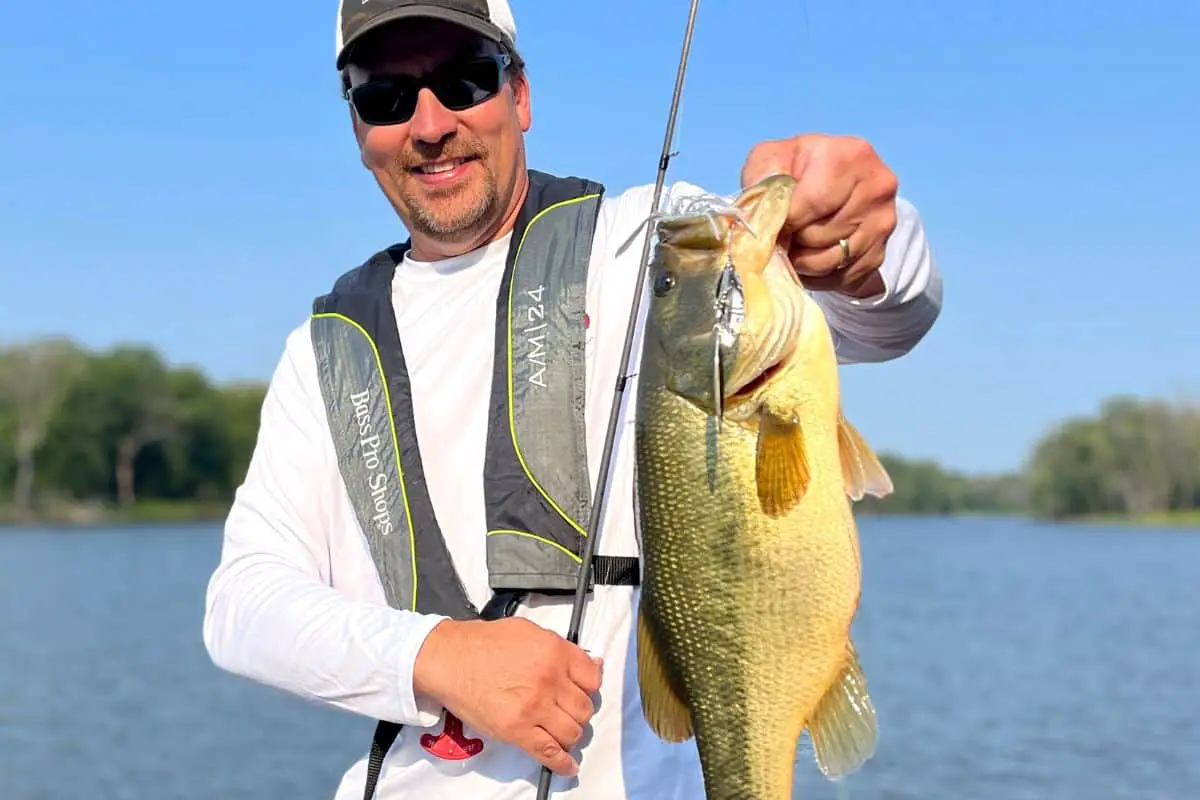We often forget when bass fishing that the weather conditions we are experiencing are very different from what is actually happening under the water. Wind is something anglers often despise, yet it is one of the best times to be fishing.
Bass anglers need to always find the windiest shoreline to locate active bass. There are many benefits to fishing in the wind, but the most important is bass are on the prowl and more aggressively looking to feed.
Most recreational anglers do the exact opposite of this. They will find protected bays and pockets to anchor the boat and look for places on the shoreline where the wind is not blowing hard.
Yes, it is a pain to fish in the wind. Casting is difficult, it is not comfortable for us, and the presentations can be a challenge if not using the right setup.
All of those inconveniences are minimized when you run across a pile of big bass smashing your lures on a windy shoreline.
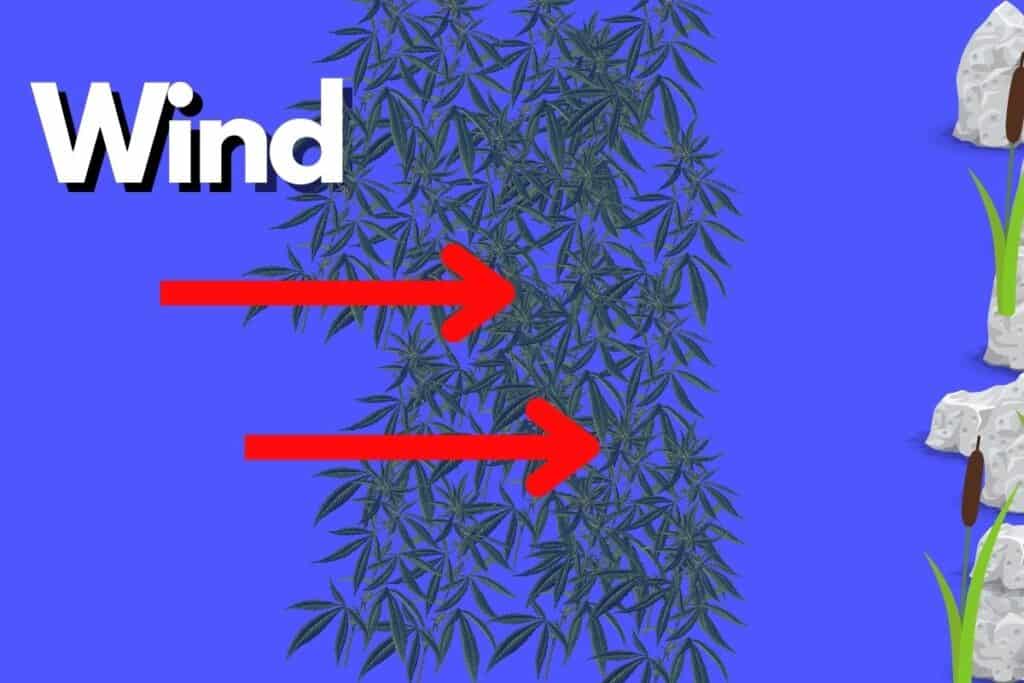
Look For This Type of Shoreline Being Hit By The Wind
We cannot determine which direction the wind is coming from, but we can position ourselves to make the most of it.
When heading out to the lake, I will look for places on my GPS, paper map, or Google Earth, that will have the wind hitting it as close to perpendicular as I can find.
My ideal situation is to have that wind blowing hard straight into the bank.
If this is not possible, finding places where the wind is coming in at a 45-degree angle is good as well as points, pinch-points, saddles, etc., that have the wind blowing across them.
I do not worry about what the structure is, what type of cover there is, or how deep the water is. The number one factor is the wind driving hard into an area. Some of the best days in my fishing career have been along shorelines that I never would have selected to fish if it wasn’t for the wind.
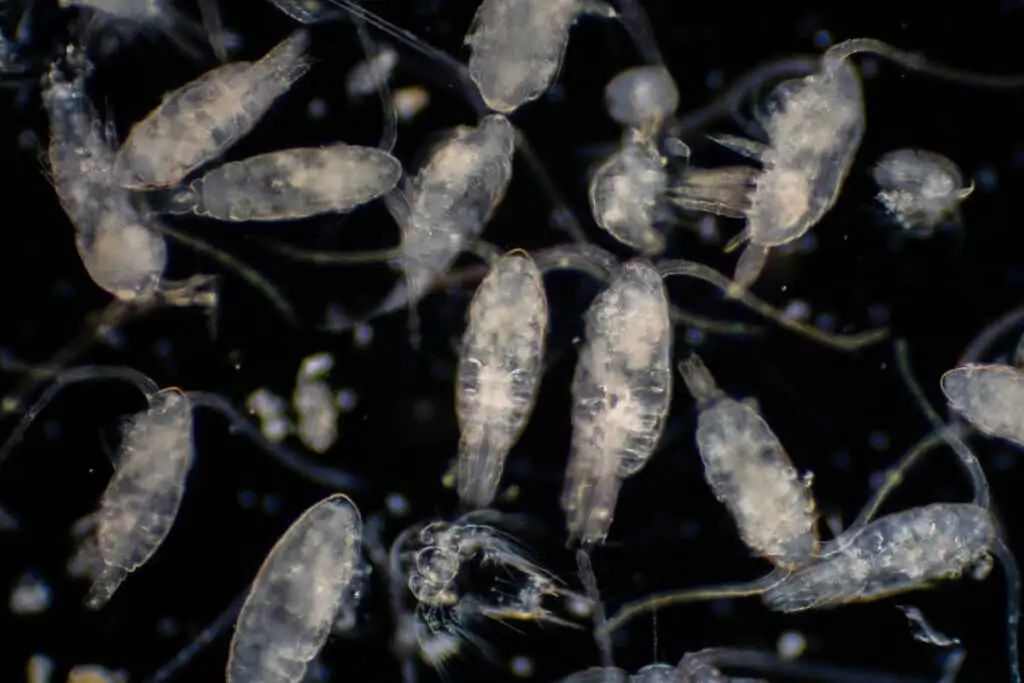
Why and How Wind Will Position Largemouth and Smallmouth Bass
One of the most common misconceptions in bass fishing is that the wind will push the baitfish.
The wind actually pushes the microorganisms, like zooplankton. These tiny creatures are at the mercy of the elements.
When a strong wind is present it will force these animals into the shoreline.
Baitfish and minnows that feed on this zooplankton will follow. It is an easy meal for these small fish and they take advantage of the situation. This gets the food chain activated.
Predators of all kinds, including bass, will be right there in the mix taking advantage of all the baitfish that have followed the zooplankton.
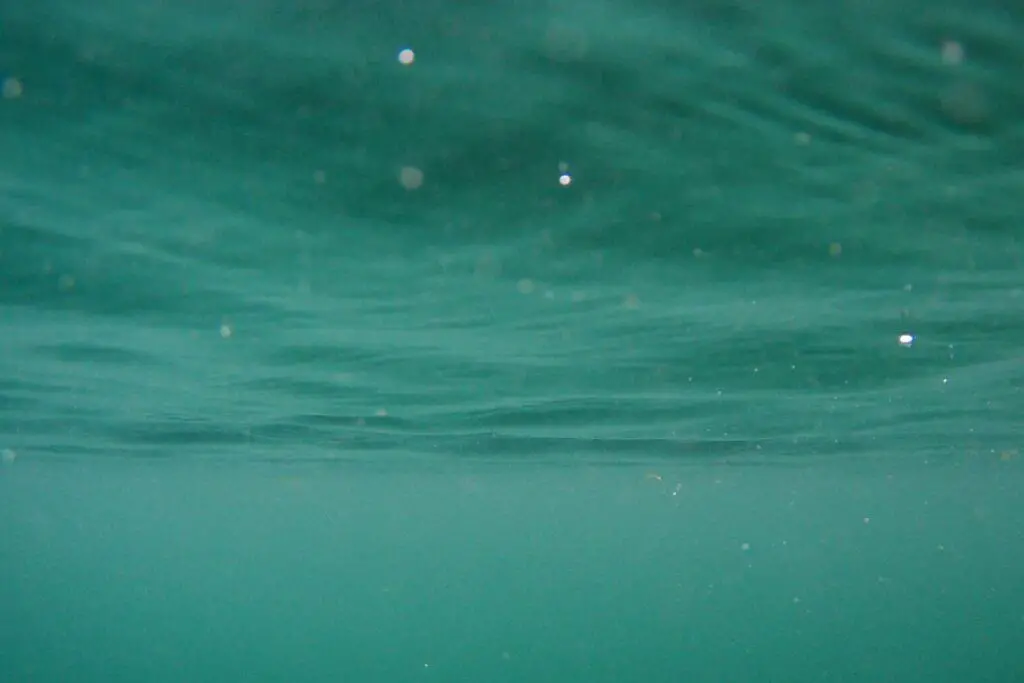
The Wind and Light Penetration When Bass Fishing
Bass are much more prolific feeders in low-light situations. This is why early morning and late evening are excellent times to be on the water. It is also why bass are more likely to roam and be active on cloudy and overcast days.
The wind disrupts the water’s surface and does not allow for the light to penetrate as far.
The surface waves also distort and hide long shadows.
Our movements as anglers both on the shoreline and in a boat are less likely to be seen by wary bass when the wind is blowing hard. The mistakes we can get away with on windy days likely would cause us to not get bit or catch far fewer bass on calm days.
Best Lures and Presentations for Bass Fishing in the Wind
When I fish in the wind I have one goal in mind and that is to cover water to find active fish.
This means that most of the time I will have lures tied on that are best suited for horizontal presentations and can be fished fast. Bottom bouncing presentations or finesse-style lures are difficult to fish because a strong wind will put a huge bow in our line.
That arc makes staying in contact with the lure challenging and feeling what is happening quite difficult.
Horizontal presentations, however, are very efficient in the wind and are much easier to decipher.
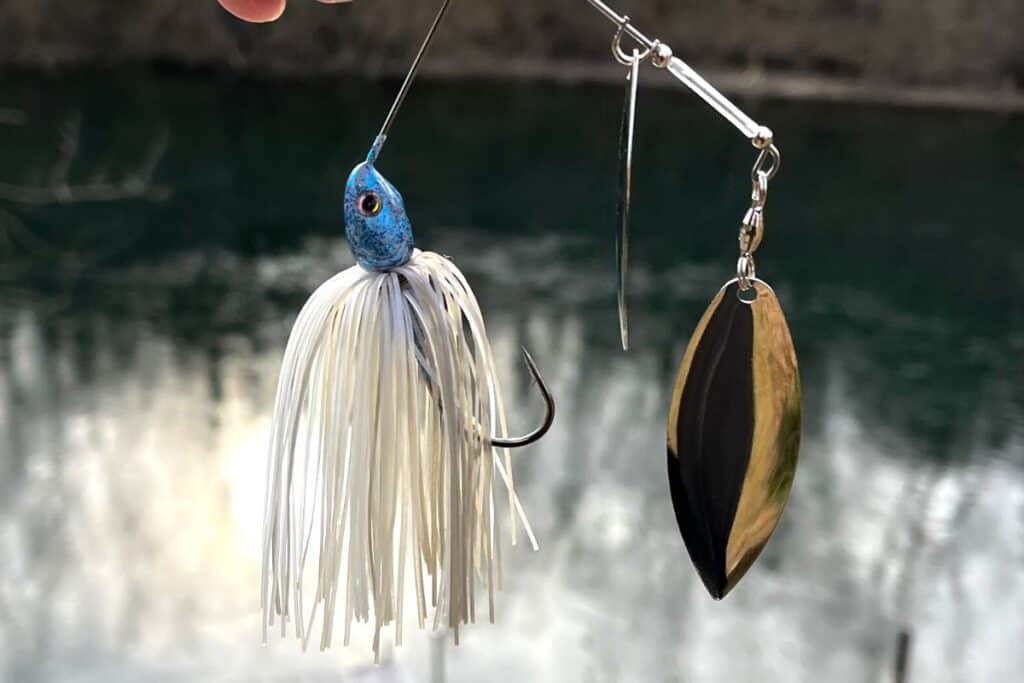
Spinnerbaits and Fishing in the Wind
This lure is always tied on when the wind is blowing hard.
A spinnerbait is relatively easy to cast in strong wind and the lure perfectly mimics the baitfish that are up there feeding on zooplankton. If the water I am fishing has lots of shad I will use whites, silver, and grays, but for lakes full of panfish skirts that mimic bluegill patterns will get a workout.
I will start off with a ½ oz model and then scale up or down from there.
Most often when fishing from a boat, we are casting with the wind so the lure can fly an incredible distance.
If I am fishing across a point, or from the shore, and I need to cast into the wind then scaling up to a ⅝ oz lure makes the presentation easier.
While a straight retrieve will work when fishing for aggressive bass in the wind, a more erratic start-and-stop presentation is my favorite. I want to make those blades bounce and dance. This type of motion can activate a predator’s feeding instinct and make them attack.
Be ready for arm-ripping strikes when fishing a spinnerbait in these conditions.
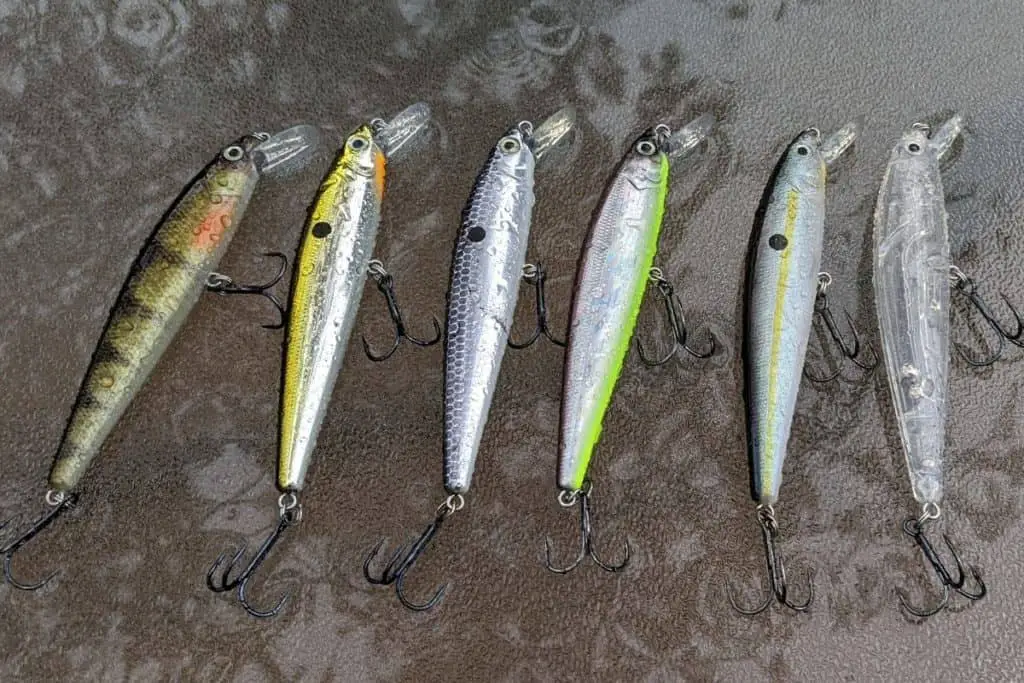
Suspending Jerkbaits and Bass Fishing in Wind
This lure is probably my favorite for windy conditions.
It is the best lure that I know of that can catch bass on back-to-back casts, and I don’t just mean two bass in two casts, but it is common to catch four, five, six, or even more consecutively.
That makes for a great time!
One of the most important factors for fishing a suspending jerkbait successfully is the depth of the bass. If you are confident that the bass are less than fifteen feet deep, then you can find a jerkbait that will work.
Wind forces the bass shallow which is perfect for this lure.
Adjust the size of the jerkbait for the running depth that you want. It is better to be on the shallow side than to tie a lure on that runs too deep. Bass in this situation tend to feed up.
I don’t want a lure that runs below the bass.
If there are bass in the area, you will likely get a bite on a jerkbait pretty fast. This means keep adjusting the lure size until you start to get bit.
(Here is an article that goes in-depth on jerkbait fishing.)
The most important presentation consideration when using a suspending jerkbait is to rip the lure on a slack line. This creates the most side-to-side action and drives the most reaction bites.
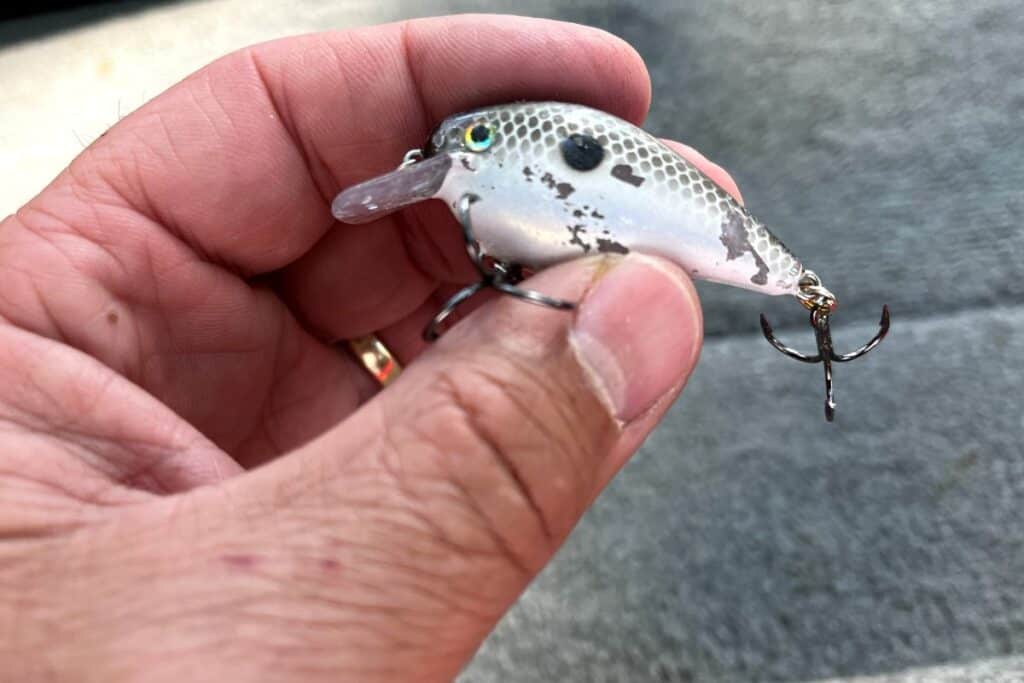
Shallow Crankbaits When Bass Fishing Wind
Small squarebill crankbaits and the wind are a powerful combination.
These lures can be burned through the shallowest places and will bounce, deflect, and ricochet off of cover. This sudden change in direction will drive bass crazy and they will hammer the lures.
Small squarebills also excel at ripping through the tops of vegetation. This too will trigger reaction bites.
The diminutive size of these squarebills often matches the baitfish and looks natural to the bass in the area.
Like the previous two lures, I will use shad colors in waters that are full of threadfin, alewives, minnows, etc. When panfish are prolific then I will use lures like firetiger.
On a recent trip to the Mississippi River, my brother and I caught over one hundred largemouth from a small pocket using tiny squarebills. The wind was strong and the bass were feeding up on bait.
When using crankbaits like this, it is important to match the lure with a rod designed for cranking. Basically, you don’t want a rod that is too stiff. A more parabolic action with a soft tip will keep the bass on the hook much better than a stiff rod with a fast action.
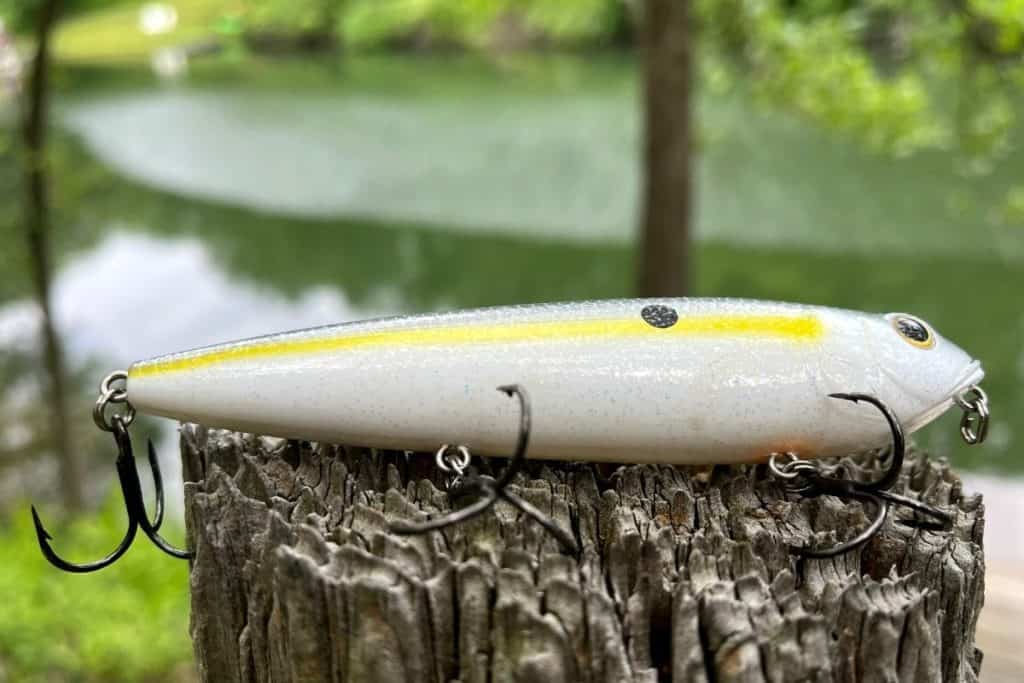
Topwater Fishing in the Wind
We often think of the “ideal” topwater situation as calm conditions and low-light.
Topwaters are also very effective in the wind, but they need to be adjusted based on how intense the waves are. In a very strong wind, a topwater is not likely to create enough of a surface disturbance to be noticed by bass from a distance, but, if the wind is not creating big waves then a topwater can be a great choice.
I will use large walking lures like the Sexy Dawg or Mega Dawg. The bigger Whopper Ploppers are also great choices for water with some chop on it.
The benefit of topwater fishing in the wind is that it can help you locate bass quickly. Once you find a location that has some action, anglers then have the option to switch to one of the previously mentioned lures.
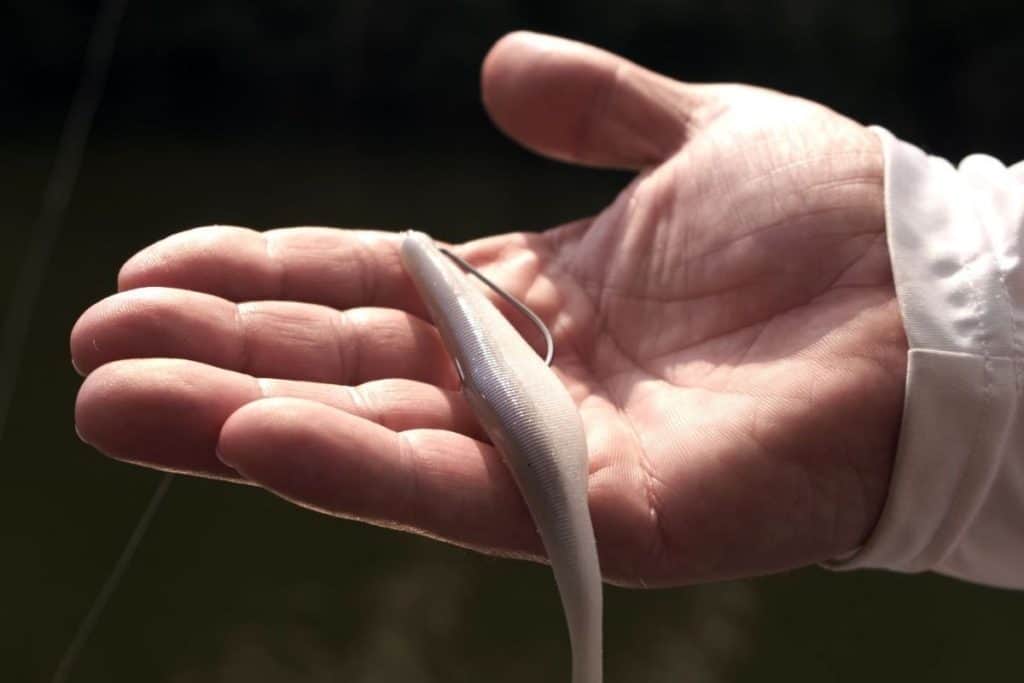
Soft Plastics and Bass Fishing in the Wind
My two options are going to be a straight-tailed soft jerkbait or a swimbait.
Both of these lures are easy to cast, fly through the wind with ease, and can cover water just like the hard baits we already discussed.
I will use these lures when the bass are not quite as active as I hoped. The straight-tail jerkbait has a powerful sinking and twitching action that can recreate a dying or wounded baitfish.
The swim bait can also be retrieved in an erratic manner that involves a change of speed, direction, and the sudden pause-and-sink that following bass find irresistible.
These lures also will get the first choice when there is thicker cover and I need something that is more weedless.
When fishing with these horizontally presented soft plastics, be ready for the rod to load up while the lure is paused and sinking. Apply steady pressure and the fight is on.
Other Advantages of Bass Fishing in the Wind
When you actively seek to fish on the windiest bank you can find, the odds are you will be the only angler there.
It is hard work. The chance for a backlash is always present. Boat positioning can be a challenge.
But it is worth it.
It is not that often that bass are aggressively on the hunt and the wind can create this ideal situation for us. Catching both numbers and size is why bass professionals take advantage of the wind every time they can.
Have fun out there and good luck. And make sure to encourage someone today. You never know how you might change their life forever.
Isaiah 6:8

